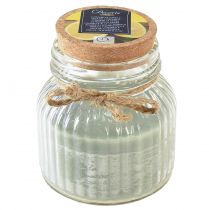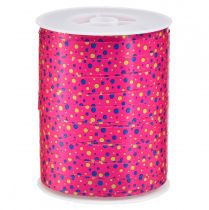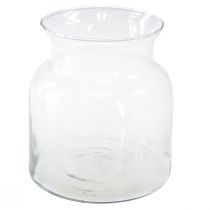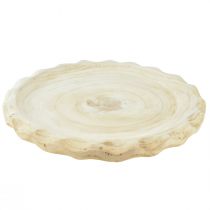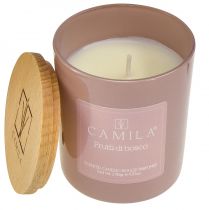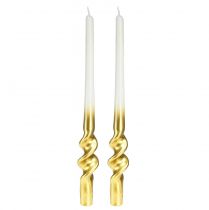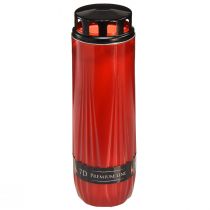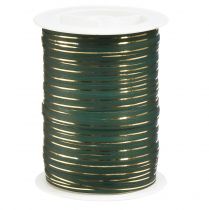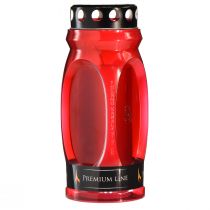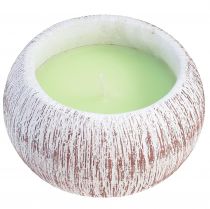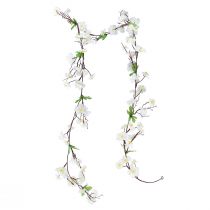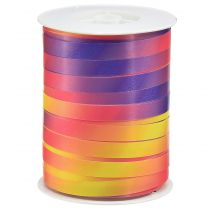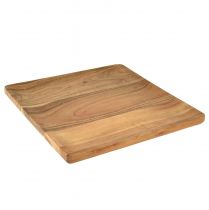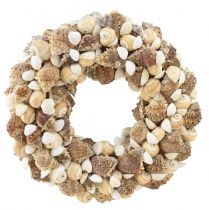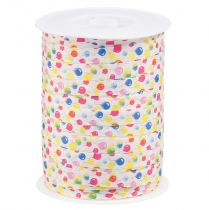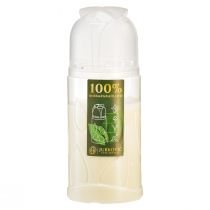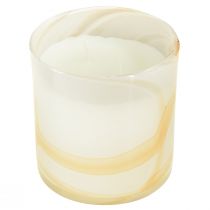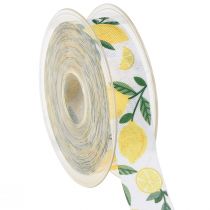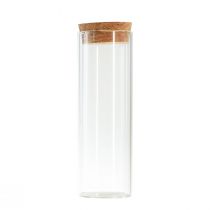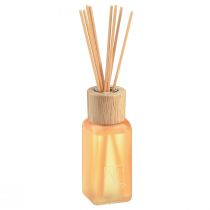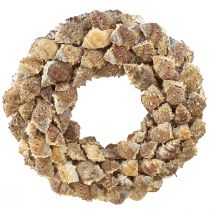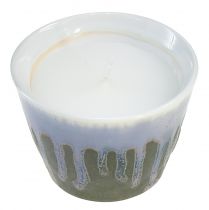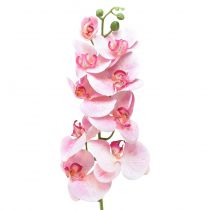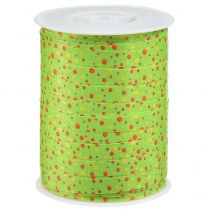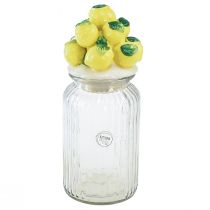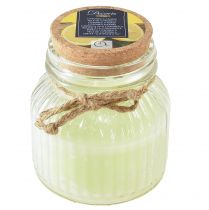Category: W as wedding floristry
Keywords: wax to wedding floristry
 Waldmoos is a collective name for various species of moss that can be found both in native forests and around the globe and are connected by their preferred climatic conditions. As the name implies, forest moss thrives mainly in deciduous and coniferous forests, preferring an environment that is rather low in sunshine and protected from too much moisture. The requirements for the targeted cultivation of forest moss are therefore not great, especially as this type of moss places only low demands on the quality of the nutrient medium. As a natural working material, Waldmoos is an indispensable aid in decoration as well as in floristry, which is used in planters as well as in the composition of decorative arrangements. For this purpose, the water is removed from natural mosses, the forest moss keeps its shape and the visually appealing, green color as it continues to dry out. In the processing of forest moss this can be easily and without the use of other tools cut, without external impact, however, the material is robust and thus retains its shape over weeks as a decoration. Waldmoos is especially popular when holes have to be stuffed in arrangements and bowls. Waldmoos replenishes this emptiness and thus complements all the arrangements with a natural green hue, which harmonizes perfectly with the other colors of a flower arrangement or a planter. In the online shop of floristik21.de forest moss and other moss varieties can be purchased inexpensively for the decoration area.
Waldmoos is a collective name for various species of moss that can be found both in native forests and around the globe and are connected by their preferred climatic conditions. As the name implies, forest moss thrives mainly in deciduous and coniferous forests, preferring an environment that is rather low in sunshine and protected from too much moisture. The requirements for the targeted cultivation of forest moss are therefore not great, especially as this type of moss places only low demands on the quality of the nutrient medium. As a natural working material, Waldmoos is an indispensable aid in decoration as well as in floristry, which is used in planters as well as in the composition of decorative arrangements. For this purpose, the water is removed from natural mosses, the forest moss keeps its shape and the visually appealing, green color as it continues to dry out. In the processing of forest moss this can be easily and without the use of other tools cut, without external impact, however, the material is robust and thus retains its shape over weeks as a decoration. Waldmoos is especially popular when holes have to be stuffed in arrangements and bowls. Waldmoos replenishes this emptiness and thus complements all the arrangements with a natural green hue, which harmonizes perfectly with the other colors of a flower arrangement or a planter. In the online shop of floristik21.de forest moss and other moss varieties can be purchased inexpensively for the decoration area.
 As a wall dispenser, a device for the professional floristry needs is called, which should help when working with films, papers and tapes. Unlike rollers, which are attached directly to the working table of the florist, the Wandabroller is screwed to a room wall and makes it possible to access without loss of working space on slides and other aids in florist's everyday life. Modern wall dispensers are offered in standardized standard dimensions, making them suitable for the roles of numerous well-known manufacturers. Particularly common wall dispensers are used where florists offer cut flowers and houseplants and want to additionally package and decorate them before handing them over to the buyer. The use of paper for safe wrapping of the plants is just as established as the use of decorative foil, whose transparent shape ensures a lasting view of the bouquet or the bouquet. Also decorative ribbons can be made available via a Wandabroller, wherein in addition to the pure delivery of bands usually also a cutting device is integrated with to measure the length of the tape exactly. In many specialist companies of the floristry, both on Wandabroller as on attachments to the work table trusts to be able to work very flexible.
As a wall dispenser, a device for the professional floristry needs is called, which should help when working with films, papers and tapes. Unlike rollers, which are attached directly to the working table of the florist, the Wandabroller is screwed to a room wall and makes it possible to access without loss of working space on slides and other aids in florist's everyday life. Modern wall dispensers are offered in standardized standard dimensions, making them suitable for the roles of numerous well-known manufacturers. Particularly common wall dispensers are used where florists offer cut flowers and houseplants and want to additionally package and decorate them before handing them over to the buyer. The use of paper for safe wrapping of the plants is just as established as the use of decorative foil, whose transparent shape ensures a lasting view of the bouquet or the bouquet. Also decorative ribbons can be made available via a Wandabroller, wherein in addition to the pure delivery of bands usually also a cutting device is integrated with to measure the length of the tape exactly. In many specialist companies of the floristry, both on Wandabroller as on attachments to the work table trusts to be able to work very flexible.
 Waterlogging refers to a condition in the plant kingdom where the plant is exposed to moisture for a prolonged period of time. Waterlogging is one of the largest enemies of countless flowers and plants, as the soil area and therefore the root system can no longer be supplied with oxygen due to the permanent supply of water. Comparable with a drowning man, the plant atrophies so in excess water or varnish of air and can thereafter not be rescued by draining or repotting. Waterlogging is a natural phenomenon that occurs regularly in different regions of the world, often alternating with periods of drought. In our latitudes, waterlogging occurs in forest and field areas only after rainfall, which makes, for example in the agricultural sector, crops unusable and can the off. Waterlogging also occurs in your own home and private garden grounds, if a flower grower irrigates his or her garden. In agriculture and horticulture, this problem is solved by drainage, flower pots and planters have smaller holes in the bottom of clay and ceramic and allow the release of water. If the planter or planter is filled with water, the phenomenon of waterlogging is preserved and the plant drowns.
Waterlogging refers to a condition in the plant kingdom where the plant is exposed to moisture for a prolonged period of time. Waterlogging is one of the largest enemies of countless flowers and plants, as the soil area and therefore the root system can no longer be supplied with oxygen due to the permanent supply of water. Comparable with a drowning man, the plant atrophies so in excess water or varnish of air and can thereafter not be rescued by draining or repotting. Waterlogging is a natural phenomenon that occurs regularly in different regions of the world, often alternating with periods of drought. In our latitudes, waterlogging occurs in forest and field areas only after rainfall, which makes, for example in the agricultural sector, crops unusable and can the off. Waterlogging also occurs in your own home and private garden grounds, if a flower grower irrigates his or her garden. In agriculture and horticulture, this problem is solved by drainage, flower pots and planters have smaller holes in the bottom of clay and ceramic and allow the release of water. If the planter or planter is filled with water, the phenomenon of waterlogging is preserved and the plant drowns.
 The term wax is commonly used to refer to a solid and heat-liquid natural material from the honeycombs of bees, but in the narrower sense the term wax encompasses many substances with different chemical properties. Basically, all substances with finely crystalline structures are considered to be wax, which exhibit a kneadable property at room temperature and change into a liquid state as early as 40 degrees. Beeswax fulfills this characteristic as well as vegetable waxes, which are obtained eg from palm trees or as wool wax fibrous origin. Wax has been used for centuries in the manufacture of candles, since this material burns with the aid of a wick under a sufficient oxygen supply and can be used more effectively as candle oil. Basically, most waxes burn odorless, but by combining with essential oils and similar substances, it is possible to produce aroma candles. In the modern manufacture of candles, only animal or vegetable wax is rarely used, instead synthetic solutions such as paraffin are used. This has similar properties as natural wax, but can be made simpler and cheaper, making it ideal for mass production of candles of all kinds. Various candles made of real wax can be found here on floristik21.de as well as paraffin variants.
The term wax is commonly used to refer to a solid and heat-liquid natural material from the honeycombs of bees, but in the narrower sense the term wax encompasses many substances with different chemical properties. Basically, all substances with finely crystalline structures are considered to be wax, which exhibit a kneadable property at room temperature and change into a liquid state as early as 40 degrees. Beeswax fulfills this characteristic as well as vegetable waxes, which are obtained eg from palm trees or as wool wax fibrous origin. Wax has been used for centuries in the manufacture of candles, since this material burns with the aid of a wick under a sufficient oxygen supply and can be used more effectively as candle oil. Basically, most waxes burn odorless, but by combining with essential oils and similar substances, it is possible to produce aroma candles. In the modern manufacture of candles, only animal or vegetable wax is rarely used, instead synthetic solutions such as paraffin are used. This has similar properties as natural wax, but can be made simpler and cheaper, making it ideal for mass production of candles of all kinds. Various candles made of real wax can be found here on floristik21.de as well as paraffin variants.
 The wax flower belongs to the silk plant plants and is originally native to Asia and Oceania. Since in the production of artificial flowers occasionally also resort to the material wax, many flower lovers associate the term wax flower an artificial flower form, but it is a true, discoverable in the wild, flower genus. The wax flower gets its name from the special look of its star-shaped flowers, which in their semi-glossy form are reminiscent of classic beeswax. The bloom of most kinds of wax flowers presents itself in a two-part form, whereby on the white ground blooms colorful small blooms in red or violet are to be found. Depending on the species exactly the reverse coloring is found, in combination with each other a bouquet of wax flowers therefore provides for aesthetic contrasts and color harmonies. In this country, wax flowers are to be found exclusively as classical ornamental plants, which are due to the warm and humid home better to keep indoors and to be supplied with sufficient water. The propagation of wax flowers is effortlessly possible also on a private scale and occurs much more frequently over cuttings than over the seeds of the aesthetic flower species. Various hybrids are also found in modern floristry, in which primarily a greater variety in the coloration of the main and secondary flowers was brought about.
The wax flower belongs to the silk plant plants and is originally native to Asia and Oceania. Since in the production of artificial flowers occasionally also resort to the material wax, many flower lovers associate the term wax flower an artificial flower form, but it is a true, discoverable in the wild, flower genus. The wax flower gets its name from the special look of its star-shaped flowers, which in their semi-glossy form are reminiscent of classic beeswax. The bloom of most kinds of wax flowers presents itself in a two-part form, whereby on the white ground blooms colorful small blooms in red or violet are to be found. Depending on the species exactly the reverse coloring is found, in combination with each other a bouquet of wax flowers therefore provides for aesthetic contrasts and color harmonies. In this country, wax flowers are to be found exclusively as classical ornamental plants, which are due to the warm and humid home better to keep indoors and to be supplied with sufficient water. The propagation of wax flowers is effortlessly possible also on a private scale and occurs much more frequently over cuttings than over the seeds of the aesthetic flower species. Various hybrids are also found in modern floristry, in which primarily a greater variety in the coloration of the main and secondary flowers was brought about.
 Lichen is a collective name for a symbiosis of living mushrooms and other life forms of the natural environment. In this way and thus represent the epitome of lichens in this country. All lichens cultivate an epiphytic way of life, so do not thrive alone on the ground but on another plan, however not always a symbiotic lifestyle in all epiphytes, as they need to fungal survival. Classical organs, which makes them unable to regulate their water balance or absorb nutrients in a known manner. Lichen itself produces a variety of so-called lichens, ranging from proteins to classic vitamins – thus making their symbiotic contribution to the plant. Conversely, the delivery of nutrients takes place, the thriving and the expansion can take place along its carrier.
Lichen is a collective name for a symbiosis of living mushrooms and other life forms of the natural environment. In this way and thus represent the epitome of lichens in this country. All lichens cultivate an epiphytic way of life, so do not thrive alone on the ground but on another plan, however not always a symbiotic lifestyle in all epiphytes, as they need to fungal survival. Classical organs, which makes them unable to regulate their water balance or absorb nutrients in a known manner. Lichen itself produces a variety of so-called lichens, ranging from proteins to classic vitamins – thus making their symbiotic contribution to the plant. Conversely, the delivery of nutrients takes place, the thriving and the expansion can take place along its carrier.
 The term wedding floristry summarizes all bouquets, arrangements and arrangements that are especially created for the wedding. Basically, a distinction can be made in a wedding floristry between a decorating church, a registry office or a ballroom and a bridal bouquet, both areas are of particular importance. The formal design of rooms often relies on the professional help of florists, who gathers about the style of the wedding before arranging the ceremonial space so as to be able to optimally attend to the wedding in the color and shape of the flowers, Biedermeier bouquet. In the bridal bouquet, the bride's desire is more important, as she can, for example, for upbeat and colorful models. The tradition of setting up flowers has been established for centuries, highlighting the aesthetic value of this solemn event. While in early centuries, horse-drawn carriages were decorated or meter-high, special structures made of flowers, the wedding floristry is today on modern vehicles and other elements of the wedding celebration instead. Floristik21.de offers not only countless articles in the field of wedding floristry, but also other decorative items.
The term wedding floristry summarizes all bouquets, arrangements and arrangements that are especially created for the wedding. Basically, a distinction can be made in a wedding floristry between a decorating church, a registry office or a ballroom and a bridal bouquet, both areas are of particular importance. The formal design of rooms often relies on the professional help of florists, who gathers about the style of the wedding before arranging the ceremonial space so as to be able to optimally attend to the wedding in the color and shape of the flowers, Biedermeier bouquet. In the bridal bouquet, the bride's desire is more important, as she can, for example, for upbeat and colorful models. The tradition of setting up flowers has been established for centuries, highlighting the aesthetic value of this solemn event. While in early centuries, horse-drawn carriages were decorated or meter-high, special structures made of flowers, the wedding floristry is today on modern vehicles and other elements of the wedding celebration instead. Floristik21.de offers not only countless articles in the field of wedding floristry, but also other decorative items.
 Wet floral foam is one of the basic materials in the production of floristic arrangements of all kinds, which is used both in the professional, floristic environment as well as plant lovers in the hobby area. As the name suggests, it is suitable for moistening and can store water in a certain period of time after watering. Wet floral foam is used as it is to be used in floral foam for days. It is necessary to use the flowers at all times and to provide them with nutrients, which is usually done via liquid fertilizer. As an alternative to wet floral foam, dry foam is used to creatively create living without living elements. These arrangements include roots, cones, dried fruits and flowers and other elements that are not dependent on a fresh living environment with water and nutrients. In terms of their material quality, there are no differences between dry and wet floral foam, so only the design preferences of a florist or hobbyist should decide on the deciding factor for which to choose.
Wet floral foam is one of the basic materials in the production of floristic arrangements of all kinds, which is used both in the professional, floristic environment as well as plant lovers in the hobby area. As the name suggests, it is suitable for moistening and can store water in a certain period of time after watering. Wet floral foam is used as it is to be used in floral foam for days. It is necessary to use the flowers at all times and to provide them with nutrients, which is usually done via liquid fertilizer. As an alternative to wet floral foam, dry foam is used to creatively create living without living elements. These arrangements include roots, cones, dried fruits and flowers and other elements that are not dependent on a fresh living environment with water and nutrients. In terms of their material quality, there are no differences between dry and wet floral foam, so only the design preferences of a florist or hobbyist should decide on the deciding factor for which to choose.
 Weymouth cones are the fruits of the Weymouth pine, also known in Germany as Strobe. This is one of the largest conifer species in the world, native to North America, and even in the 21st century rarely encountered in Europe compared to larches or firs in the wild. In general, however, the Weymouth pine in Europe has been known for several centuries and named after a writer who brought cones of this plant back to the ancient continent after one of his trips to the Americas. In comparison to the cones of other conifers, Weymouth cones present in a slightly open appearance, which is perceived as particularly aesthetic together with their large shape. As a result, Weymouth cones have become an important part of the modern decoration environment and are also used in floristry to make flower arrangements and planters with them in autumn and winter. In dried form, the cones of the Weymouth pine prove to be particularly robust and can thus be used as natural jewelery for many years. Since the wood of this tree is not only very popular in this country and is industrially processed on a large scale, cones of Weymouth pine fall as a waste product of this production in large quantities and are also here at floristik21.de to acquire a low price.
Weymouth cones are the fruits of the Weymouth pine, also known in Germany as Strobe. This is one of the largest conifer species in the world, native to North America, and even in the 21st century rarely encountered in Europe compared to larches or firs in the wild. In general, however, the Weymouth pine in Europe has been known for several centuries and named after a writer who brought cones of this plant back to the ancient continent after one of his trips to the Americas. In comparison to the cones of other conifers, Weymouth cones present in a slightly open appearance, which is perceived as particularly aesthetic together with their large shape. As a result, Weymouth cones have become an important part of the modern decoration environment and are also used in floristry to make flower arrangements and planters with them in autumn and winter. In dried form, the cones of the Weymouth pine prove to be particularly robust and can thus be used as natural jewelery for many years. Since the wood of this tree is not only very popular in this country and is industrially processed on a large scale, cones of Weymouth pine fall as a waste product of this production in large quantities and are also here at floristik21.de to acquire a low price.
 The term wick describes an aid for obtaining light from open light sources, primarily for candles and oil lamps. The wick has a thread-like structure and is largely connected to the combustible base material, i.e. either dipped in oil or incorporated into the inside of a candle stump or tealight. The other end of the wick is free-standing and lit. In the tip of the wick, which pulls the liquid oil or wax upwards and is completely soaked after a short period of time, the actual combustion of the fuel takes place in connection with oxygen. Since the wick has a thin, fibrous fabric with a multitude of smallest channels, new liquid is drawn up into the tip of the wick so that the light of a candle or oil lamp can be enjoyed for hours. Modern candles and lamps are offered with wicks made of cotton or special plastics, which are ideal for open combustion. Since the thread burns successively even during the burning time, regular shortening of the wick is advisable, otherwise the flame will become increasingly sooty and discharge this soot into the atmosphere. With many modern candles, this step is omitted thanks to a special production technique for the wick, which automatically leans to the side and burns itself without progressive soot formation.
The term wick describes an aid for obtaining light from open light sources, primarily for candles and oil lamps. The wick has a thread-like structure and is largely connected to the combustible base material, i.e. either dipped in oil or incorporated into the inside of a candle stump or tealight. The other end of the wick is free-standing and lit. In the tip of the wick, which pulls the liquid oil or wax upwards and is completely soaked after a short period of time, the actual combustion of the fuel takes place in connection with oxygen. Since the wick has a thin, fibrous fabric with a multitude of smallest channels, new liquid is drawn up into the tip of the wick so that the light of a candle or oil lamp can be enjoyed for hours. Modern candles and lamps are offered with wicks made of cotton or special plastics, which are ideal for open combustion. Since the thread burns successively even during the burning time, regular shortening of the wick is advisable, otherwise the flame will become increasingly sooty and discharge this soot into the atmosphere. With many modern candles, this step is omitted thanks to a special production technique for the wick, which automatically leans to the side and burns itself without progressive soot formation.
 The term covers all the items of modern craftsmanship that come from braided groves, reeds and other natural materials. The name itself already indicates the most common purpose of the wickerworks, which were already thousands of years ago as baskets in various sizes around the globe and facilitated the transport of goods of all kinds. Nowadays wicker or rattan baskets are not only available in classic basket shapes, but also extend to woven garden or balcony furniture or weatherproof ornaments. Even planters for the garden offer a properly prepared, but wickerwork for this application. In the future, it is not the case that it is difficult to do so. This can be used to lay soil or granules and perform the final insertion of flowers and plants as in a conventional flowerpot. Wickerwork is also an option for the design of Easter eggs or decorative landscapes for your own four walls without planting. An extensive selection of modern wickerwork can be found in floristik21.de's offer.
The term covers all the items of modern craftsmanship that come from braided groves, reeds and other natural materials. The name itself already indicates the most common purpose of the wickerworks, which were already thousands of years ago as baskets in various sizes around the globe and facilitated the transport of goods of all kinds. Nowadays wicker or rattan baskets are not only available in classic basket shapes, but also extend to woven garden or balcony furniture or weatherproof ornaments. Even planters for the garden offer a properly prepared, but wickerwork for this application. In the future, it is not the case that it is difficult to do so. This can be used to lay soil or granules and perform the final insertion of flowers and plants as in a conventional flowerpot. Wickerwork is also an option for the design of Easter eggs or decorative landscapes for your own four walls without planting. An extensive selection of modern wickerwork can be found in floristik21.de's offer.
 The lantern is a special variant of the lantern, which can be placed on a table or other smooth surface by its shape. A lantern serves the purpose of providing a permanent lighting by a candle that should not go out even in wind and weather. This is made possible by the special outer shape of the lantern, which, for example made of sturdy wood or plastic, protects the tealight inside or a pillar candle and at the same time ensures sufficient oxygen supply for the combustion process. If lanterns are rarely used today as a hanging light source, the lantern has been used as a decorative element and is often lit in autumn and winter. Since in this country no longer has to rely on the practical function of candlelight, a lantern is set up exclusively for aesthetic purposes, with the marketing by the retailer takes place in countless forms. Even without a candle inserted, a lantern becomes a decorative item that can be found in countless households in this country. In some variants, the lantern still has an additional handle, so that in addition to its placement is also possible to hang on the ceiling.
The lantern is a special variant of the lantern, which can be placed on a table or other smooth surface by its shape. A lantern serves the purpose of providing a permanent lighting by a candle that should not go out even in wind and weather. This is made possible by the special outer shape of the lantern, which, for example made of sturdy wood or plastic, protects the tealight inside or a pillar candle and at the same time ensures sufficient oxygen supply for the combustion process. If lanterns are rarely used today as a hanging light source, the lantern has been used as a decorative element and is often lit in autumn and winter. Since in this country no longer has to rely on the practical function of candlelight, a lantern is set up exclusively for aesthetic purposes, with the marketing by the retailer takes place in countless forms. Even without a candle inserted, a lantern becomes a decorative item that can be found in countless households in this country. In some variants, the lantern still has an additional handle, so that in addition to its placement is also possible to hang on the ceiling.
 Winding wire is a versatile aid in horticulture and floristry and is used wherever plant parts are to be given a secure hold. One of the most important areas for the use of winding wire is the stabilization of vine plants such as the ivy or the grapevine, which suffer from a constant growth in the amount of their own weight and thus threaten to collapse. With winding wire, this can be prevented by branches or branches are selectively attached in a higher area. In order to use winding wire in vine plants and other plants, a climbing aid made of wood, bamboo or similar materials is indispensable, so that the wire itself can find support on a stable framework. Outside the floristry winding wire is also a decorative tool in the decoration area, with which natural or artificial decorative elements can be easily attached to wreaths or arrangements. Modern winding wire is usually made of aluminum and has the property to be easily bent. Compared to other variants such as classic flower trimmer wire winding wire remains in its position after manual deformation, but this is not completely rigid. Inexpensive winding wire, which, for example, even with green sheath ensures a particularly aesthetic sight in the garden environment, can be found here on floristik21.de.
Winding wire is a versatile aid in horticulture and floristry and is used wherever plant parts are to be given a secure hold. One of the most important areas for the use of winding wire is the stabilization of vine plants such as the ivy or the grapevine, which suffer from a constant growth in the amount of their own weight and thus threaten to collapse. With winding wire, this can be prevented by branches or branches are selectively attached in a higher area. In order to use winding wire in vine plants and other plants, a climbing aid made of wood, bamboo or similar materials is indispensable, so that the wire itself can find support on a stable framework. Outside the floristry winding wire is also a decorative tool in the decoration area, with which natural or artificial decorative elements can be easily attached to wreaths or arrangements. Modern winding wire is usually made of aluminum and has the property to be easily bent. Compared to other variants such as classic flower trimmer wire winding wire remains in its position after manual deformation, but this is not completely rigid. Inexpensive winding wire, which, for example, even with green sheath ensures a particularly aesthetic sight in the garden environment, can be found here on floristik21.de.
 The term wire is used to refer to various metals in a specific shape that result from special manufacturing processes and are turned and rolled as thinly as possible on all sides. The result is an arbitrarily long, thin structure that is reminiscent of a thread, but offers a significantly more stable structure due to the choice of material. In the further processing, wire offers the advantage that it can be bent into any shape, but in comparison to braided threads, it remains in this selected shape. This property not only makes wire a popular work tool in numerous industrial areas, it has also played an important role in horticulture and floristry. So-called flower binder wire, which is usually made of aluminum and can be purchased with a colored plastic coating, is most frequently used. Flower binder wire ensures that bouquets and bouquets of all kinds are brought into a firm shape and held together after completion. Wire is also used for wreaths and arrangements to create a stable basic framework around which floral elements and other decorative objects can be attached. Wire in its different shapes and colors can also be purchased in the floristik21.de online range, in order to design attractive flower containers and decorations as a professional flower shop as well as in the leisure sector.
The term wire is used to refer to various metals in a specific shape that result from special manufacturing processes and are turned and rolled as thinly as possible on all sides. The result is an arbitrarily long, thin structure that is reminiscent of a thread, but offers a significantly more stable structure due to the choice of material. In the further processing, wire offers the advantage that it can be bent into any shape, but in comparison to braided threads, it remains in this selected shape. This property not only makes wire a popular work tool in numerous industrial areas, it has also played an important role in horticulture and floristry. So-called flower binder wire, which is usually made of aluminum and can be purchased with a colored plastic coating, is most frequently used. Flower binder wire ensures that bouquets and bouquets of all kinds are brought into a firm shape and held together after completion. Wire is also used for wreaths and arrangements to create a stable basic framework around which floral elements and other decorative objects can be attached. Wire in its different shapes and colors can also be purchased in the floristik21.de online range, in order to design attractive flower containers and decorations as a professional flower shop as well as in the leisure sector.
 The term wire mesh refers to an object composed of wire, which depending on the size and material is used in floristry or in horticulture. Floristic wire meshes are primarily needed for flower arrangements and wreaths in order to create a basic framework for the attachment of flowers, blossoms and other decorative objects. Modern wire meshes are made of aluminum in the floristic area and can also be purchased in different colors, which can be used to respond to the individual taste and the event for which the bouquet or arrangement is to be made. Wire meshes with larger thicknesses are used in horticulture and help shrubs and young trees to achieve stable and safe growth. Wire mesh is also installed in larger gardens and nurseries to protect against adverse weather conditions, in order to offer various plants good protection against wind and precipitation. In addition to individual wires, the floristik21.de range also includes some prefabricated wire mesh that helps private plant lovers and extends the product range of professional florists.
The term wire mesh refers to an object composed of wire, which depending on the size and material is used in floristry or in horticulture. Floristic wire meshes are primarily needed for flower arrangements and wreaths in order to create a basic framework for the attachment of flowers, blossoms and other decorative objects. Modern wire meshes are made of aluminum in the floristic area and can also be purchased in different colors, which can be used to respond to the individual taste and the event for which the bouquet or arrangement is to be made. Wire meshes with larger thicknesses are used in horticulture and help shrubs and young trees to achieve stable and safe growth. Wire mesh is also installed in larger gardens and nurseries to protect against adverse weather conditions, in order to offer various plants good protection against wind and precipitation. In addition to individual wires, the floristik21.de range also includes some prefabricated wire mesh that helps private plant lovers and extends the product range of professional florists.
 The Wisteria, also referred to in many regions of Germany as Blauregen, belongs to the butterflies and is considered one of the most robust green plants in German nature. Together with various types of ivy and vines, the Wisteria is one of the most popular climbing and climbing plants in this country, which is used primarily for the design of house walls. Originally home to North America, the Wisteria has been known in Germany and Central Europe for several centuries and is fondly used to design urban habitats. Its robust and durable character conceals the advantages and disadvantages of the Wisteria. As an advantage, the plant proves to be optimal protection against wind and weather and ensures even in adverse conditions that a house is optimally protected by external influences. Due to their strong growth and the progressive lignification, the basic substance of a house can also suffer from the Wisteria, as it penetrates into the masonry or roof beams and here for minor damage. With regular care and targeted trimming, however, such risks can be easily reduced, so that the Wisteria is valued rather than avoided. In the summer months, the plant also becomes a real adornment for any house wall, as they form a variety of bluish to purple flowers and can shine over large areas of the plant.
The Wisteria, also referred to in many regions of Germany as Blauregen, belongs to the butterflies and is considered one of the most robust green plants in German nature. Together with various types of ivy and vines, the Wisteria is one of the most popular climbing and climbing plants in this country, which is used primarily for the design of house walls. Originally home to North America, the Wisteria has been known in Germany and Central Europe for several centuries and is fondly used to design urban habitats. Its robust and durable character conceals the advantages and disadvantages of the Wisteria. As an advantage, the plant proves to be optimal protection against wind and weather and ensures even in adverse conditions that a house is optimally protected by external influences. Due to their strong growth and the progressive lignification, the basic substance of a house can also suffer from the Wisteria, as it penetrates into the masonry or roof beams and here for minor damage. With regular care and targeted trimming, however, such risks can be easily reduced, so that the Wisteria is valued rather than avoided. In the summer months, the plant also becomes a real adornment for any house wall, as they form a variety of bluish to purple flowers and can shine over large areas of the plant.
![]() Waldmoos is a collective name for various species of moss that can be found both in native forests and around the globe and are connected by their preferred climatic conditions. As the name implies, forest moss thrives mainly in deciduous and coniferous forests, preferring an environment that is rather low in sunshine and protected from too much moisture. The requirements for the targeted cultivation of forest moss are therefore not great, especially as this type of moss places only low demands on the quality of the nutrient medium. As a natural working material, Waldmoos is an indispensable aid in decoration as well as in floristry, which is used in planters as well as in the composition of decorative arrangements. For this purpose, the water is removed from natural mosses, the forest moss keeps its shape and the visually appealing, green color as it continues to dry out. In the processing of forest moss this can be easily and without the use of other tools cut, without external impact, however, the material is robust and thus retains its shape over weeks as a decoration. Waldmoos is especially popular when holes have to be stuffed in arrangements and bowls. Waldmoos replenishes this emptiness and thus complements all the arrangements with a natural green hue, which harmonizes perfectly with the other colors of a flower arrangement or a planter. In the online shop of floristik21.de forest moss and other moss varieties can be purchased inexpensively for the decoration area.
Waldmoos is a collective name for various species of moss that can be found both in native forests and around the globe and are connected by their preferred climatic conditions. As the name implies, forest moss thrives mainly in deciduous and coniferous forests, preferring an environment that is rather low in sunshine and protected from too much moisture. The requirements for the targeted cultivation of forest moss are therefore not great, especially as this type of moss places only low demands on the quality of the nutrient medium. As a natural working material, Waldmoos is an indispensable aid in decoration as well as in floristry, which is used in planters as well as in the composition of decorative arrangements. For this purpose, the water is removed from natural mosses, the forest moss keeps its shape and the visually appealing, green color as it continues to dry out. In the processing of forest moss this can be easily and without the use of other tools cut, without external impact, however, the material is robust and thus retains its shape over weeks as a decoration. Waldmoos is especially popular when holes have to be stuffed in arrangements and bowls. Waldmoos replenishes this emptiness and thus complements all the arrangements with a natural green hue, which harmonizes perfectly with the other colors of a flower arrangement or a planter. In the online shop of floristik21.de forest moss and other moss varieties can be purchased inexpensively for the decoration area. 